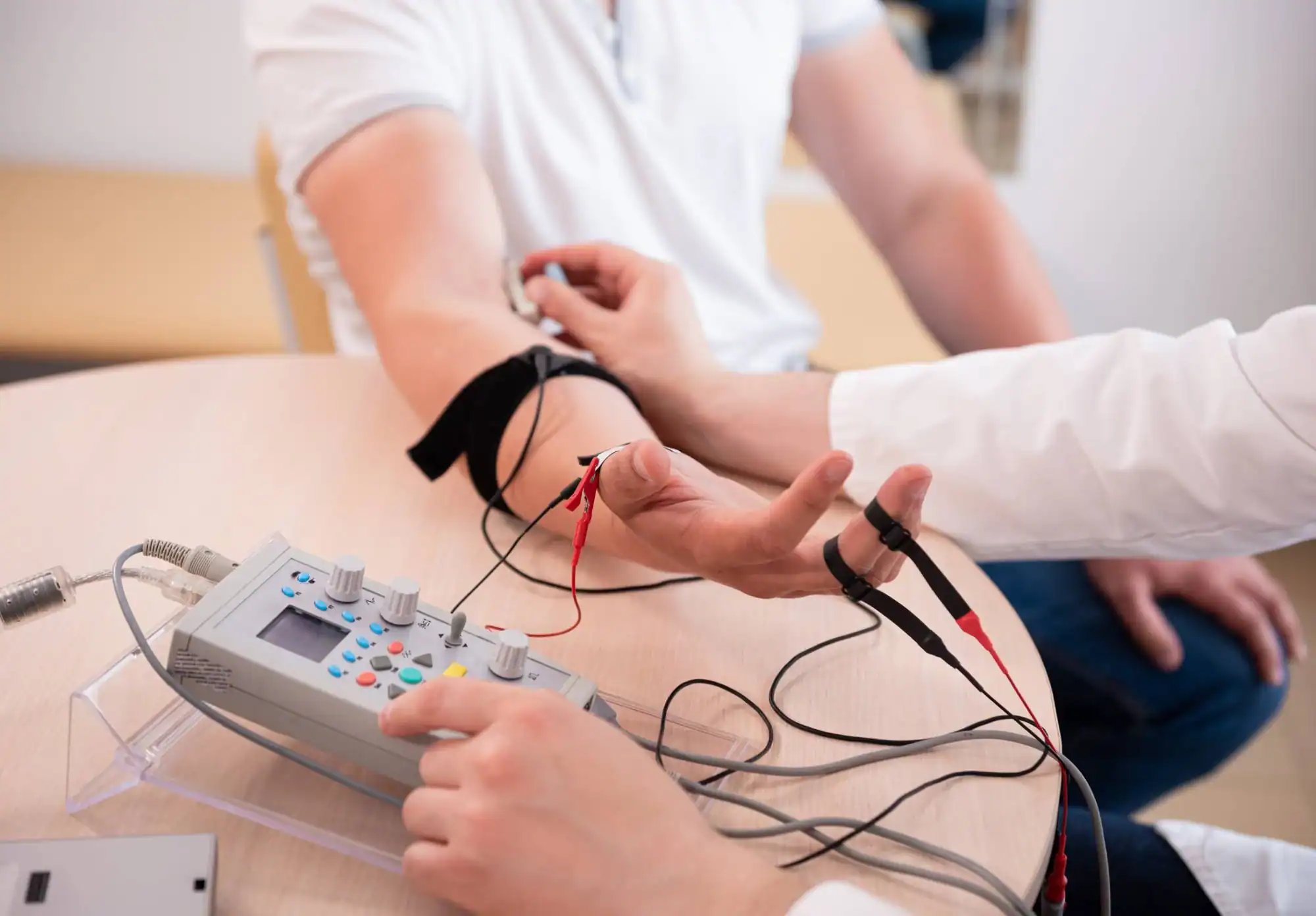Advanced electromyography testing that pinpoints nerve and muscle problems when other tests come up short.
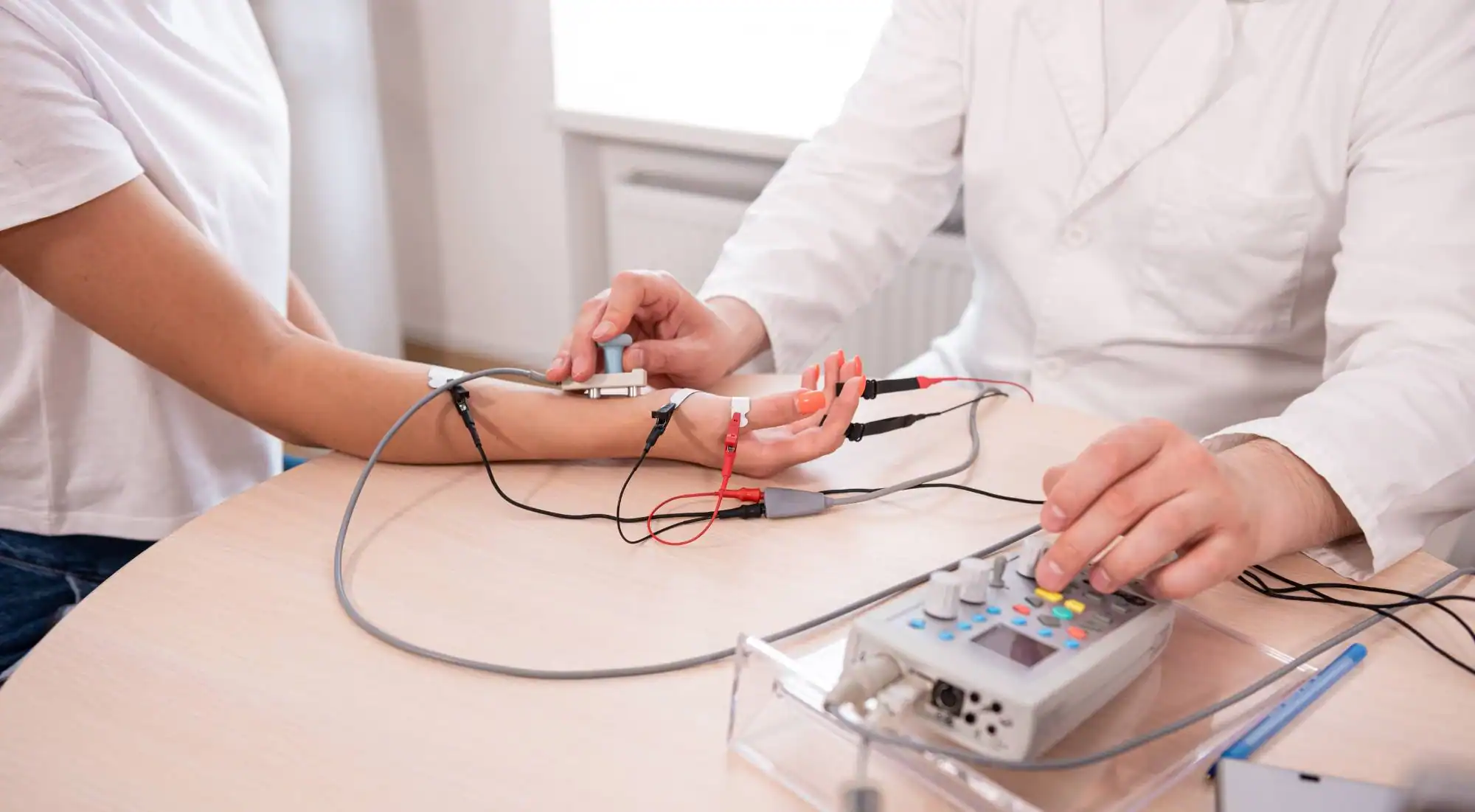
Reviews
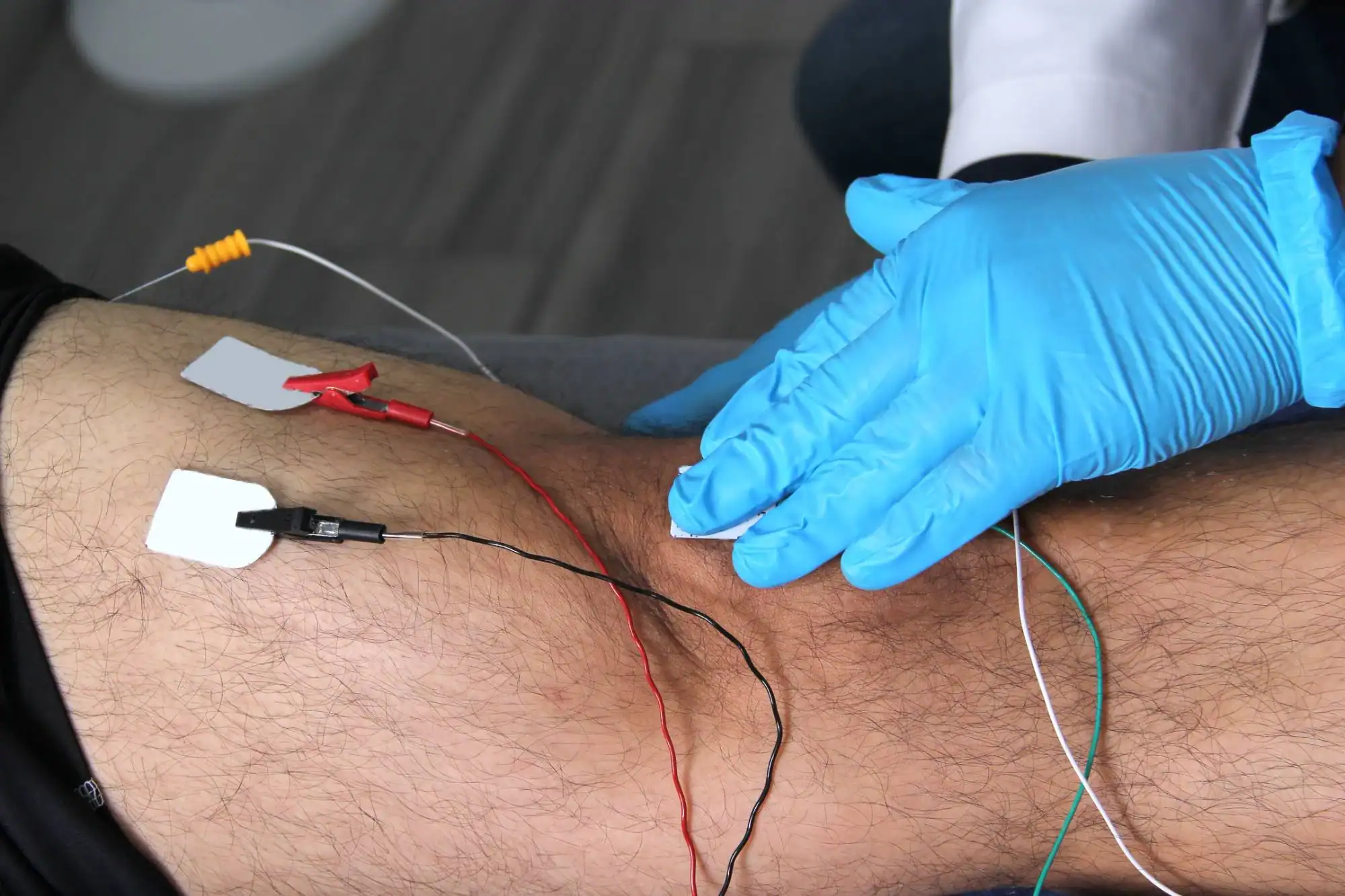
You’ve been dealing with numbness, tingling, or muscle weakness for months. Maybe your primary care doctor ran some basic tests that didn’t show much. Maybe you’ve been told it’s “just stress” or “normal aging.”
EMG testing changes that. This diagnostic procedure measures the electrical activity in your muscles and nerves, giving us a clear picture of what’s actually happening in your body. When you have concrete answers, you can move forward with the right treatment instead of guessing.
Most patients leave our office with a definitive diagnosis and a clear plan. No more wondering if your symptoms are “in your head” or if you’ll ever get better. Just real information you can act on.
NY Spine Medicine has been helping Queens residents get to the bottom of their nerve and muscle problems for years. Our specialists understand that when you’re dealing with unexplained symptoms, you need more than just another test—you need answers.
We’ve performed thousands of EMG tests and nerve conduction studies. We know what to look for, how to interpret complex results, and most importantly, how to explain what we find in terms that make sense to you.
You’re not just another appointment on our schedule. You’re someone who deserves to understand what’s happening in your body and what you can do about it.
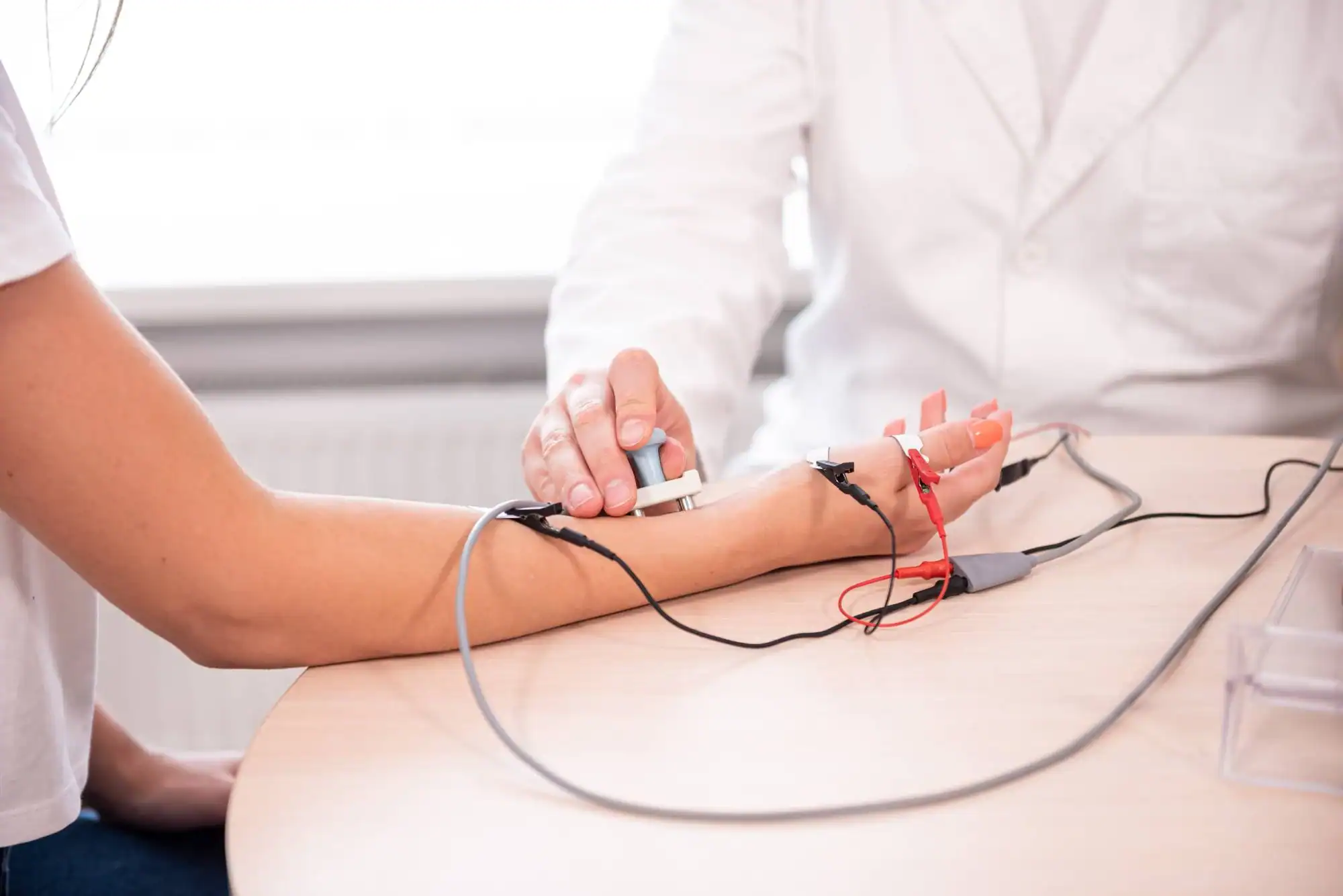
First, we’ll talk through your symptoms and medical history. This helps us focus the test on the areas most likely to give us useful information. No point in testing everything when your symptoms point to specific nerve pathways.
The EMG test itself has two parts. During the nerve conduction study, we place small electrodes on your skin and send mild electrical pulses to measure how well your nerves transmit signals. Then, for the electromyography portion, we insert a thin needle electrode into specific muscles to measure their electrical activity.
Most people find the test uncomfortable but not unbearable. It typically takes 30-60 minutes depending on how many areas we need to examine. You’ll get your results immediately, and we’ll explain exactly what they mean for your condition and treatment options.
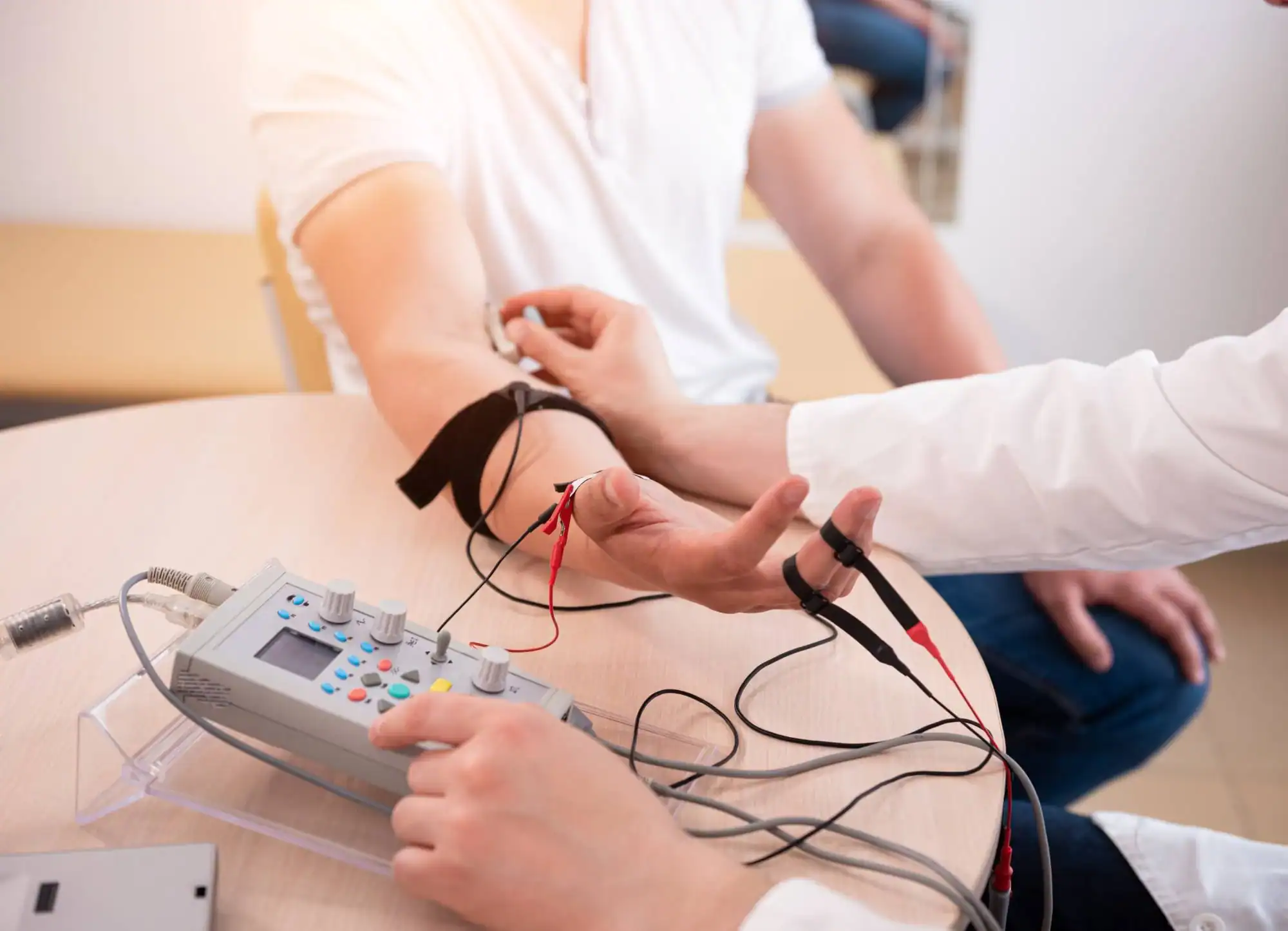
Ready to get started?
Our EMG testing covers both nerve conduction studies and electromyography to give you the most complete picture possible. We test nerve function, muscle response, and the connection between them. This comprehensive approach means we catch problems that single tests might miss.
We focus on the conditions most common in our Queens patients: carpal tunnel syndrome, sciatica, peripheral neuropathy, muscle disorders, and nerve damage from injuries or diabetes. Each test is customized based on your specific symptoms and concerns.
After your test, you’ll receive a detailed report that your referring doctor can use to develop your treatment plan. We also coordinate directly with your healthcare team to make sure everyone understands the results and next steps.
